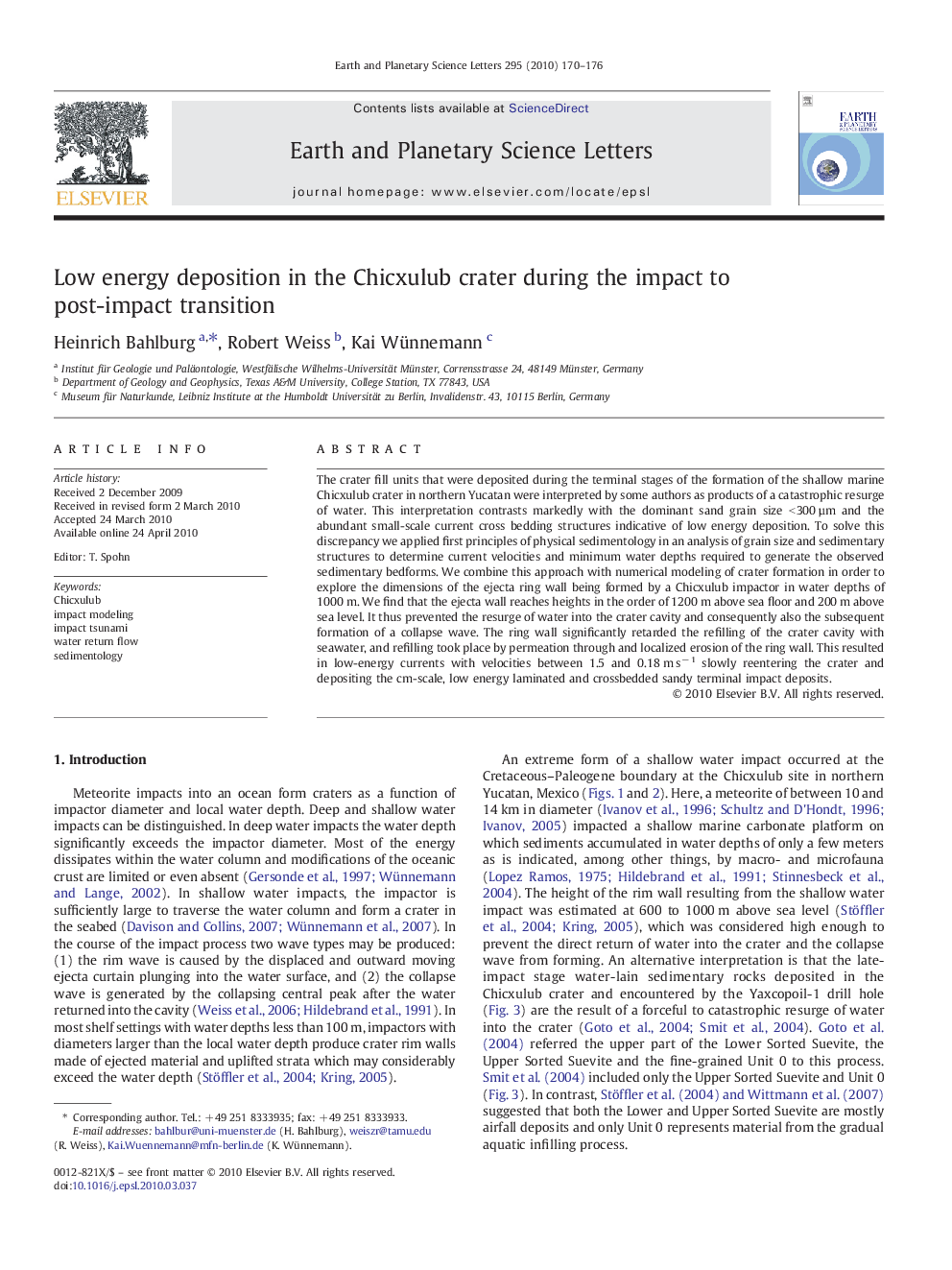| Article ID | Journal | Published Year | Pages | File Type |
|---|---|---|---|---|
| 6430935 | Earth and Planetary Science Letters | 2010 | 7 Pages |
The crater fill units that were deposited during the terminal stages of the formation of the shallow marine Chicxulub crater in northern Yucatan were interpreted by some authors as products of a catastrophic resurge of water. This interpretation contrasts markedly with the dominant sand grain size < 300 µm and the abundant small-scale current cross bedding structures indicative of low energy deposition. To solve this discrepancy we applied first principles of physical sedimentology in an analysis of grain size and sedimentary structures to determine current velocities and minimum water depths required to generate the observed sedimentary bedforms. We combine this approach with numerical modeling of crater formation in order to explore the dimensions of the ejecta ring wall being formed by a Chicxulub impactor in water depths of 1000 m. We find that the ejecta wall reaches heights in the order of 1200 m above sea floor and 200 m above sea level. It thus prevented the resurge of water into the crater cavity and consequently also the subsequent formation of a collapse wave. The ring wall significantly retarded the refilling of the crater cavity with seawater, and refilling took place by permeation through and localized erosion of the ring wall. This resulted in low-energy currents with velocities between 1.5 and 0.18 m sâ 1 slowly reentering the crater and depositing the cm-scale, low energy laminated and crossbedded sandy terminal impact deposits.
